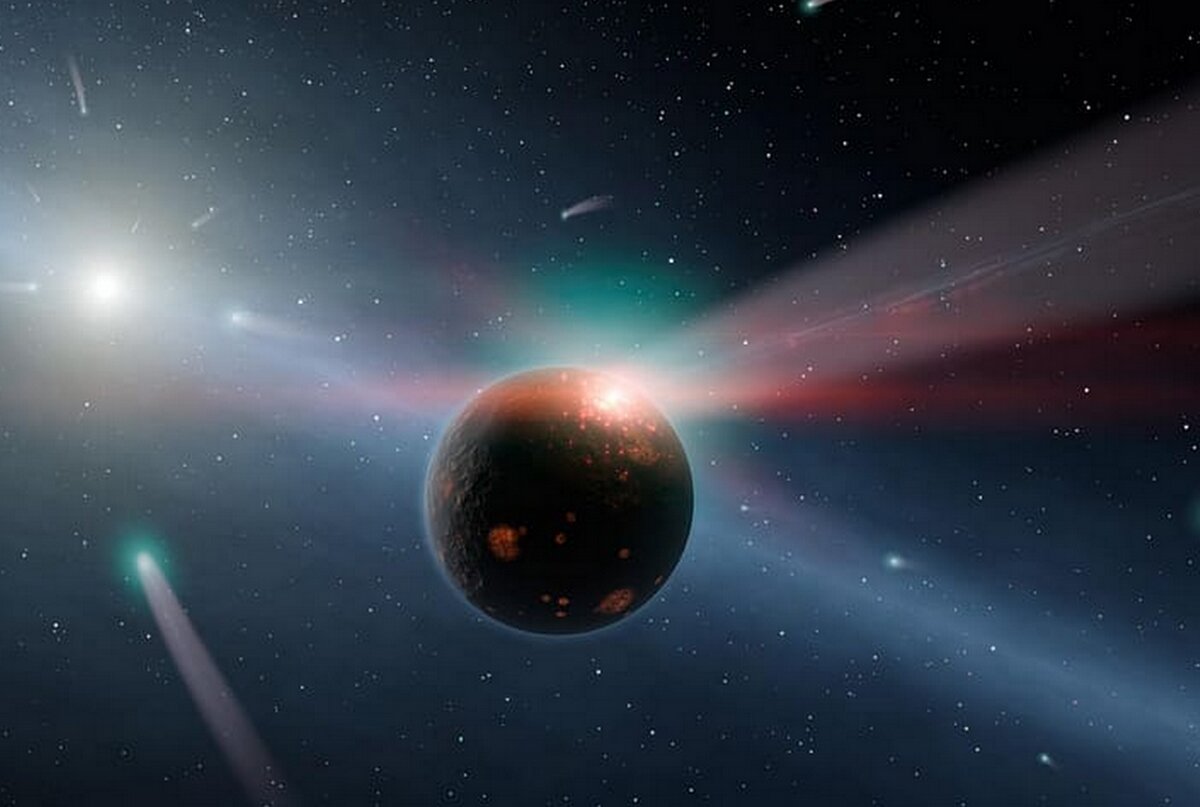Comet 12P/Pons–Brooks is currently approaching Earth, but don’t worry, it won’t collide with us – it only visits us every 71 years.
There are quite a few such celestial companions – the most famous of them is perhaps Halley’s Comet – but the celestial body in question is still unusual, because 12P is a cryovolcanic comet that ejects ice-cold “magma” from the “fiery crater” on its surface.
Like all comets, this object has a solid core consisting of ice, rock, dust and gases, surrounded by a cloud of gas called a coma, which evaporates as it approaches the Sun, causing the comet’s signature plume. But unlike most other similar bodies of this type, the gas and ice in 12P’s core has accumulated so much that it could explode, so to speak, ejecting the frozen interior, called cryomagma, through large cracks in the core’s shell.
On July 20 of this year, several astronomers noticed a significant flare on the comet’s surface, which suddenly became about 100 times brighter than it normally is. This increase in brightness occurred because of this, writes a Live Science — because the comet’s coma suddenly “swollen” from gas and ice crystals released from its interior, allowing it to reflect more sunlight back to Earth.
“By July 26, the comet’s coma had grown to about 230,000 kilometers in length, or more than 7,000 times the size of the nucleus itself, which has an estimated diameter of about 30 km,” explained astronomer Richard Miles, a member of the British Astronomical Society who studies cryovolcanic comets.
But interestingly, due to the uneven shape of the coma, the comet now looks like it has horns. Other experts have compared the deformed comet to the Millennium Falcon, the iconic spacecraft from Star Wars.
The unusual shape of the comet’s coma is likely due to the irregular shape of the 12P nucleus, Miles said. The path of the escaping gas was partially obstructed by a section in the core, which created a “notch” in the enlarged coma. As the gas moved further away from the comet, this notch became more noticeable, he added.
According to Miles, this is the first major outburst detected from 12P in 69 years, mainly because its orbit takes it too far from Earth for them to be visible.
12P has one of the longest known orbital periods of any comet. It takes about 71 years for the “celestial volcano” to completely circle the Sun, during which time it also travels to the most distant parts of the Solar System. The comet will reach its closest point to the Sun on April 21, 2024, and will be closest to Earth on June 2, 2024, when it will be clearly visible in the night sky. Hopefully we will see more eruptions in the next few years.
By the way, 12P is not the only volcanic comet being studied. In the past few years, several notable eruptions have been observed, for example, at Comet 29P/Schwassmann-Wachmann (29P) – the most volatile volcanic comet known in the Solar System.
In December 2022, astronomers witnessed an eruption of 29P, spewing about 1 million tons of cryomagma into space. And this April, for the first time, scientists were able to accurately predict one of 29P’s outbursts before it actually happened, thanks to a slight increase in brightness that suggested more gas was leaking out of the comet’s core.
This might also be interesting:
2023-07-29 13:34:39
#volcano #erupted #planetdestroying #comet #grew #horns


